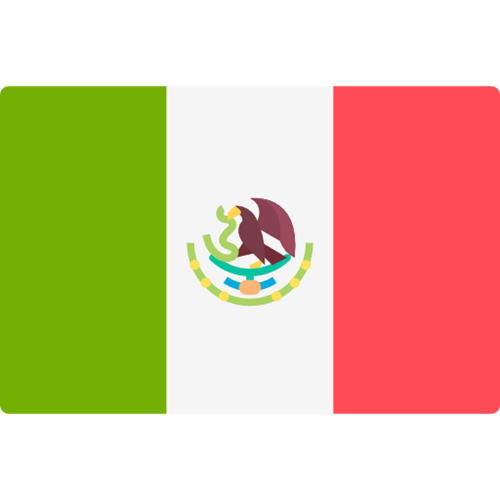Eurofins Toys & Hardlines Year in Review 2023
Assembling safety and quality in all toys and hardgoods
Regulations are ever-changing in the pursuit of creating safer, more sustainable products. As we approach the end of 2023, let’s reflect on the significant regulatory revisions that have occurred this year.
Our experts have outlined the key regulatory and standards updates across consumer categories. Read them now:
Food Contact Materials & Packaging
ISO 8124-3:2020+Amd.1:2023 new impact for migration of heavy metals
On 23 March 2023, the International Organization for Standardization (ISO) Technical Committee: ISO/TC 181 issued a new amendment ISO 8124-3:2020+Amd.1:2023 for toy safety standards regarding heavy metals. The amendment will come into effect as long as the standard is issued.
New guidance for classification toys for children under or above 36 months
On 2 February 2023, the European Commission published new guidance on the classification of toys for children under three or three years and over.
The aim of Guidance Document No. 11 is to help classify toys intended for children under or above 36 months of age with examples and pictures to facilitate decision-making. Toy categories for which specific guidelines are already available are not included nor are toy categories which are clearly intended for children three years and older.
New references of harmonised standards for toys
On 5 April 2023, the European Commission published the Commission Implementing Decision (EU) 2023/740 of 4 April 2023 on harmonised standards for toys drafted in support of Directive 2009/48/EC of the European Parliament and of the Council, which repeals the Implementing Decision (EU) 2021/1992.
Revision of the Toy Safety Directive
On 28 July 2023, the European Parliament and Council published a proposal for a regulation of the safety of toys and a repeal of Directive 2009/48/EC. On the same date, the European Commission also opened the feedback period for this adopted act.
CPSC issues NPR for safety standard for button cell or coin batteries
On 16 August 2022, the United States enacted Public Law 117-171, also known as “Reese’s Law,” to require the Consumer Product Safety Commission (CPSC) to establish a final consumer product safety standard for button cell or coin batteries and consumer products containing button cell or coin batteries, no later than 1 year after the Act’s enactment.
CPSC publishes direct final rule for the marking of toy, look-alike, and imitation firearms
On 11 May 2023, the U.S. Consumer Product Safety Commission (CPSC) published in the Federal Register a direct final rule (DFR) that would create a new 16 CFR part 1272 that adopts the existing Department of Commerce rule for the marking of toys, look-alike, and imitation firearms with non-substantive and conforming changes.
ASTM publishes the revised Toy Safety Standard ASTM F963-23 and notifies the CPSC
On 13 October 2023, ASTM International published ASTM F963-23 Standard Consumer Safety Specification for Toy Safety, which incorporates amendments approved over recent years by the ASTM International F15.22 Subcommittee on Toy Safety.
Technical requirements for the following toy safety requirements were revised:
- Battery-operated toys
- Expanding materials
- Sound producing toys (acoustics)
- Projectile toys
UK amends list of safety standards for toy
On 22 June 2023, the UK’s Department for Business and Trade published Notice 0084/23. This notice announces the review of the list of designated toy safety standards for demonstrating compliance with Toys (Safety) Regulations 2011 (S.I. 2011/1881).
New statement on control of imports of toys and consumer products
On 31 December 2022, Turkey’s Ministry of Commerce published two communications which established the nation’s import control requirements for toys and some consumer products. They became effective on 1 January 2023.
Repealed national requirements for toys and childcare products
On 16 June 2023, the following law was published in the Czech Republic:
Act No.167/2023 which amends Law No. 258/2000 Coll., on the protection of public health and amending certain related laws, as amended, and other related laws.
This Act repealed Decree No. 84/2001 and Decree No. 521/2005 related to hygienic requirements for toys and products for children under three years of age. At this moment, there are no national deviations for this type of product.
It came into effect on 1 July 2023.
Japan prohibits magnet sets and balls that expand with water
Japan’s Ministry of Economy, Trade and Industry (METI) announced a Cabinet Decision on the Cabinet Order for the Partial Revision of the Order for Enforcement of the Consumer Product Safety Act.
(EU) 2023/1338 – Safety Requirements for Childcare Products
On 28 June 2023, the European Commission published decision (EU) 2023/1338 on the safety requirements to be met by European standards for certain children’s products and related products pursuant to Directive 2001/95/EC of the European Parliament and of the Council. This Decision shall enter into force on 18 July 2023.
CPSC updates safety standard for non-full-size baby cribs
On 6 March 2023, the Consumer Product Safety Commission (CPSC) issued a direct final rule (16 CFR 1220) to update the mandatory Safety Standard for Non-Full Size Baby Cribs. The final rule incorporates the latest version of ASTM F406-22, Standard Consumer Safety Specification for Non-Full Size Baby Cribs, with a few modifications.
CPSC updates safety standard for bedside sleepers
On 9 May 2023, the U.S. Consumer Product Safety Commission (CPSC) issued a direct final rule 16 CFR 1222 to update the mandatory Safety Standard for the Bedside Sleepers. The final rule incorporates the latest version of ASTM F2906-23, Standard Consumer Safety Specifications for Bedside Sleepers.
Oregon Amends Toxic-Free Kids Act
On 27 July 2023, the State of Oregon passed HB 3043 to amend the Toxic-Free Kids Act that requires manufacturers of children’s products to report products containing High Priority Chemicals of Concern for Children’s Health (HPCCCH) if intentionally added or present as a contaminant that is equal to or greater than 100 ppm.
CPSC publishes final rule to codify the ban of crib bumpers
On 14 August 2023, the Consumer Product Safety Commission issued final rule 16 CFR 1309 to codify the ban of crib bumpers pursuant to the Safe Sleep for Babies Act of 2021, which requires that crib bumpers shall be considered a banned hazardous product under the Consumer Product Safety Act.
CPSC publishes final rule to codify the ban of inclined sleepers for infants
On 16 August 2023, the Consumer Product Safety Commission issued final rule 16 CFR 1310 to codify the ban of inclined sleepers for infants pursuant to the Safe Sleep for Babies Act of 2021, which requires that inclined sleepers for infants shall be considered a banned hazardous product under the Consumer Product Safety Act.
Canada issues new Carriages and Strollers Regulations
On 7 June 2023, Health Canada issued the new Carriages and Strollers Regulations (SOR/2023-101), which will repeal SOR/2016-167.
Updated standard list of childcare articles
On 2 February 2023, the French authorities published the following notice:
It updated the standard list regarding the use of childcare articles.
Publication of Turkish mandatory standards list
On 11 May 2023, the Turkish Ministry of Industry and Technology published the notice No. SGM 2022/40 (32187). This notice aims to determine the procedures and principles regarding the Turkish Standards for products put into compulsory application.
Extension of the adaptation date for pacifier conformity identification
On 9 August 2023, the Ministry of Development, Industry, Commerce and Services/National Institute of Metrology, Quality and Technology published a rectification of Inmetro Ordinance no. 301, of 12 July 2021, published in the Official Gazette of 16 July 2021. This consolidates the conformity assessment requirements for pacifiers/dummies.
It indicates the extension of the adaptation date of the design of the Conformity Identification Seal provided for in Annex II of Ordinance No. 301 to 30 June 2024.
Hong Kong amends Children’s Product Standards
On 17 February 2023, Hong Kong’s Secretary for Commerce and Economic Development issued Toys and Children’s Products Safety Ordinance (Amendment of Schedule 2) Notice 2023 to amend 4 product standards for demonstrating compliance with the Toys and Children’s Products Safety Ordinance.
Food Contact Materials and Packaging
Harmonised standard for plastic caps and lids
On 1 June 2023, the European Commission published the Commission Implementing Decision (EU) 2023/1060 of 30 May 2023 on a harmonised standard for test methods and requirements to demonstrate that plastic caps and lids remain attached to beverage containers drafted in support of Directive (EU) 2019/904 from the European Parliament and of the Council.
New amendment for plastic materials in FCM Regulation (Regulation EU 2023/1442)
On 1 August 2023, the Regulation EU 2023/1442 came into force. This amends the list of authorised substances in Annex I of the EU 10/2011.
New amendment for plastic materials in FCM Regulation (Regulation (EU) 2023/1627)
On 11 August 2023, the Regulation (EU) 2023/1627 was published. This amends Annex I to Regulation (EU) No 10/2011 regarding the authorisation of the substance bis(2-ethylhexyl)cyclohexane-1,4-dicarboxylate (FCM No 1079).
Oregon prohibits PFAS in food containers
On 16 May 2023, the State of Oregon passed SB 543 to prohibit intentionally added perfluoroalkyl and polyfluoroalkyl substances (PFAS) in food containers. Additionally, under the new law, food vendors may not use polystyrene foam containers in selling food to a consumer and the sale of polystyrene foam containers and polystyrene foam packaging peanuts is prohibited.
Rhode Island extends effective date for PFAS in Food Packaging Law (Chemical – Packaging)
On 22 June 2023, the State of Rhode Island approved Bill H5861 Substitute A as amended to amend Bill H7438 Substitute A that prohibits intentionally added PFAS chemicals in food packages. Under the amendment, the effective date of the prohibition was extended from 1 January 2024 to 31 July 2024.
Ministerial Guidelines on environmental labeling published
On 21 November 2022, the Ministry of the Environment and Energy Security (MASE) published the Ministerial Decree n. 360 of 28 September 2022, which adopts the Guidelines on environmental labelling pursuant to art. 219, paragraph 5, of the legislative decree 3 April 2006, n. 152, for the correct fulfilment of the packaging labelling obligations defined by Legislative Decree 116/2020.
On 1 January 2023, Italy’s plastic tax was due to enter into force, but the Budget Law for 2023 has deferred the of plastic tax to January 2024.
New requirement for cellulosic materials and packaging in contact with food
On 22 May 2023, Brazil’s Ministry of Health/National Health Surveillance Agency/Collegiate Board published Resolution – RDC No. 798 of 19 May 2023 regarding cellulosic materials, packaging and equipment intended to come into contact with food, along with other measures. This resolution amends the Resolution of the Collegiate Board of Directors - RDC No. 88 of 29 June 2016, which approved the technical regulation on cellulosic materials, packaging and equipment intended to come into contact with food, along with other measures.
An end to the penalties for confusion caused by some recycling markings
On 6 July 2023, the French authorities published Decisions 449872, 450134 & 450158 of 30 June 2023 which cancelled the following decrees:
Taiwan amends Hygienic Standards for Food Utensils, Containers and Packages
The Taiwan Food and Drug Administration has recently published Notification Order 1111303439 to amend the Hygienic Standards for Food Utensils, Containers and Packages. The amendment includes the following revisions:
- Amending the name of the source of the law
- Amending the text of the management regulations on the prohibition of recycling plastic containers and strengthening the scope of application
- Replacing the table for test items of various materials with a new table
- Adding specifications for material testing and dissolution testing items for alloy materials
Korea amends Recycling Packaging Law
On 28 March 2023, an amendment to the Act on the Promotion of Saving and Recycling of Resources (APSRR) was promulgated. The APSRR previously required the Minister of Environment to establish criteria for evaluation of the material, structure and recyclability of packaging material. Under the amendment, which will come into effect on 29 March 2024, colour and weight were added as criteria for evaluation of packaging material.
CPSC implements the STURDY Act Requirements for the CSU stability
On 19 April 2023, the CPSC Commissioners voted to approve the direct final rule that implements the Stop Tip-overs of Unstable, Risky Dressers on Youth (STURDY) Act’s requirements for the stability of the clothing storage units (CSUs).
The direct final rule (DFR) adopts the performance requirements of the ASTM F2057-23 as the Safety Standard for Clothing Storage Units in 16 CFR 1261, in place of the current part 1261 that the CPSC had published in November 2022 as a consumer product safety standard for CSUs to protect children from tip-over-related death or injury, that otherwise will take effect on 24 May 2023.
CPSC issues new mandatory standard for adult portable bed rails
On 21 July 2023, the U.S. Consumer Product Safety Commission (CPSC) published the new federal mandatory Safety Standard for Adult Portable Bed Rails, in order to protect consumers from unreasonable risks of injury and death associated with entrapment by adult portable bed rails (APBRs).
California regulates textile fibreglass in juvenile products, mattresses and upholstered furniture
On 8 October 2023, the State of California passed AB 1059 to prohibit textile fibreglass in juvenile products, mattresses and upholstered furniture. The prohibition will become effective on 1 January 2027.
Updated standards for folding seats
On 10 May 2023, French authorities published an opinion on the application of Decree No. 99-777 of 9 September 1999 relating to the prevention of risks associated with the use of folding deckchairs, transatlantic and stroller chairs.
New requirements for batteries
On 28 July 2023, the European Commission published Regulation (EU) 2023/1542 of 12 July 2023 concerning batteries and waste batteries, amending Directive 2008/98/EC and Regulation (EU) 2019/1020 and repealing Directive 2006/66/EC.
This regulation lays down requirements on sustainability, safety, labelling, marking and information to allow batteries to be put on the market or into service within the European Union. It also stipulates the minimum requirements for extended producer responsibility, collection and treatment of waste batteries, and reporting.
CPSC publishes direct final rule for products containing button cell or coin batteries
On 21 September 2023, the U.S. Consumer Product Safety Commission (CPSC) published in the Federal Register the direct final rule (DFR) 16 CFR 1263 that establishes the safety requirements for button cell or coin batteries and consumer products containing such batteries, as mandated by Reese’s Law. The new rule incorporates by reference the voluntary standard, ANSI/UL 4200A-2023, as the mandatory standard for consumer products containing button cell or coin batteries.
Relevant regulation news and updates which affect, in general, consumer products
The below table summarises the most recent standard updates and upcoming dates of withdrawal (non-exhaustive):
|
The International Organization for Standardization (ISO) |
|||
|
Reference |
Title |
Publication date |
Previously |
|
Safety of toys — Part 2: Flammability |
May 2023 |
||
|
Safety of toys — Part 10: Experimental sets for chemistry and related activities |
May 2023 |
||
|
Safety of toys — Part 6: Certain phthalate esters |
August 2023 |
||
|
Safety of toys — Part 12: Microbiological safety |
August 2023 |
|
|
New update to Candidate List of Substances of Very High Concern (SVHCs)
On 17 January 2023, the ECHA (European Chemicals Agency) released the new Candidate List of SVHCs. With the addition of nine new substances, the current list of SVHCs now contains 233 substances.
European Commission publishes a proposal on ‘green claims’
On 22 March 2023, the European Commission put forward a proposal for a directive on substantiation and communication of explicit environmental claims, 'green claims directive' (COM/2023/166 final).
The proposal requires companies to substantiate claims relating to the impacts of their products and the activities of the organization on the environment using robust, science-based and verifiable methods.
New European regulation for consumer products
On 23 May 2023, the European Commission published the General Product Safety Regulation (GPSR):
The aim of this new regulation is to reinforce the safety rules for products sold both offline and online, market surveillance for unsafe products and consumer rights.
New restriction for lead in PVC articles
On 8 May 2023, the European Commission published an amendment to the restrictions list in Annex XVII of Regulation (EC) No 1907/2006 as regards lead and its compounds in PVC (polymers or copolymers of vinyl chloride).
Commission Regulation (EU) 2023/923 of 3 May 2023 adds six points in entry 63 – lead and its compound, column 2 of Annex XVII of Regulation (EC) No 1907/2006 concerning the Registration, Evaluation, Authorisation and Restriction of Chemicals (REACH).
New update to Candidate List of Substances of Very High Concern (SVHCs)
On 14 June 2023, the ECHA (European Chemicals Agency) released the new Candidate List of SVHCs. With the addition of two new substances, the current list of SVHCs now contains 235 substances.
Fight against deforestation – new Regulation (EU) 2023/1115
On 31 May 2023, the European Parliament published and adopted Regulation (EU) 2023/1115 on the making available on the Union market and the export from the Union of certain commodities and products associated with deforestation and forest degradation. Which aimed at tackling deforestation and forest degradation driven by the European Union (EU) and it repeals Regulation (EU) No 995/2010.
New restriction for microplastics
On 27 September 2023, the European Commission published an amendment to Regulation (EC) No. 1907/2006 (REACH) on intentionally added microplastic restriction.
The amendment consists of a new entry 78 in Annex XVII under the EU chemical legislation REACH which restricts synthetic polymer microparticles and two new appendices 15 and 16 which indicate rules on the proving degradability and solubility of these microplastics.
European Commission's thinking about the restriction of microplastics intentionally added to products
On 17 October 2023, the European Commission published its current thinking on the application of the microplastics restriction, (Entry 78 of Annex XVII of REACH), including plastic glitter on its own and in products.
The prohibition of placing on the market applies as of 17 October 2023 to microplastics including plastic glitter (unless biodegradable or soluble), on their own or intentionally added to products, for uses for which no transitional period is set in the restriction (e.g., art and crafts kits, toys, Christmas decorations, etc.).
US EPA amends formaldehyde standards for composite wood products
On 21 February 2023, the US Environmental Protection Agency (EPA) issued a Final Rule (88 FR 10468) to amend the formaldehyde standards for composite wood products regulations under the Toxic Substances Control Act (TSCA). The Final Rule went into effect on 23 March 2023.
Minnesota approves PFAS and heavy metals regulation on various consumer products
On 24 May 2023, the State of Minnesota signed Bill HF 2310 into law to regulate Perfluoroalkyl and polyfluoroalkyl substances (PFAS), lead, and cadmium in various consumer products. The new law also contains a notification requirement for products containing intentionally added PFAS.
Washington adopts new restriction and reporting rule under Safer Products Program
The Safer Products Program for the State of Washington implements the Toxic Pollution law (Chapter 70A.350 RCW), which was signed in 2019 to create a pathway to keep toxic chemicals out of the environment. Under the Safer Products Program, there is a four-phase implementation process to:
- Designate priority chemicals;
- Identify consumer products that contain these chemicals;
- Decide whether to regulate those chemical-product combinations by requiring reporting or chemical restrictions; and
- Adopt rules to implement those regulatory actions.
Maine amends PFAS Reporting Law
On 8 June 2023, the State of Maine approved Bill HP 138 – LD 217 to amend the PFAS Reporting Law, Public Law c. 477 – An Act To Stop Perfluoroalkyl and Polyfluoroalkyl Substances Pollution.
OEHHA proposes amendment to Proposition 65 short-form warning requirements
On 27 October 2023, the OEHHA issued a Notice of Proposed Rulemaking (NPR) to amend Prop 65 Article 6, Clear and Reasonable Warnings.
AGEC law measures that are in progress and to come
The "AGEC" law has considerably accelerated the change in the production and consumption model, by inviting producers to question the lifecycle of the products they produce and how they can be disposed of ultimately, and the environmental impact this may have.
Today, several measures are already playing an active part in our daily lives. Others are being deployed, with the same purpose.
Additional list of dangerous substances published
On 14 September 2023, the Minister of Ecological Transition and Territorial Cohesion published Order of 30 August 2023 relating to the presence of dangerous substances in products generating waste.
One of the decrees (text No. 15) establishes a first list of substances whose level of concern is comparable to substances of very high concern, in accordance with the recommendations of ANSES in its opinion issued on 25 March 2021. The listed substances are:
- Diisooctyl phthalate (CAS No. 27554-26-3)
- 1,3-benzenediol (resorcinol) (CAS No. 108-46-3)
Another decree (text No 16) designates an alternative method, Scan4Chem of informing consumers with specific information relating to the presence of dangerous substances in products generating waste through product barcodes which can be scanned by consumers.
List of substances with endocrine disrupting properties is established
On 12 October 2023, the Minister of Ecological Transition and Territorial Cohesion published several Decrees of 28 September 2023 relating to substances with endocrine-disrupting properties.
One of the Decrees (text No. 13) aims to provide information to consumers about the presence of substances with endocrine-disrupting properties in ingredients, mixtures, articles and food products, as indicated by the AGEC law.
Another Decree (text No. 14) designates an alternative method of informing the public, Scan4Chem, relating to information on the presence of substances which qualify as proven, presumed, or suspected endocrine-disrupting properties in products.

























































